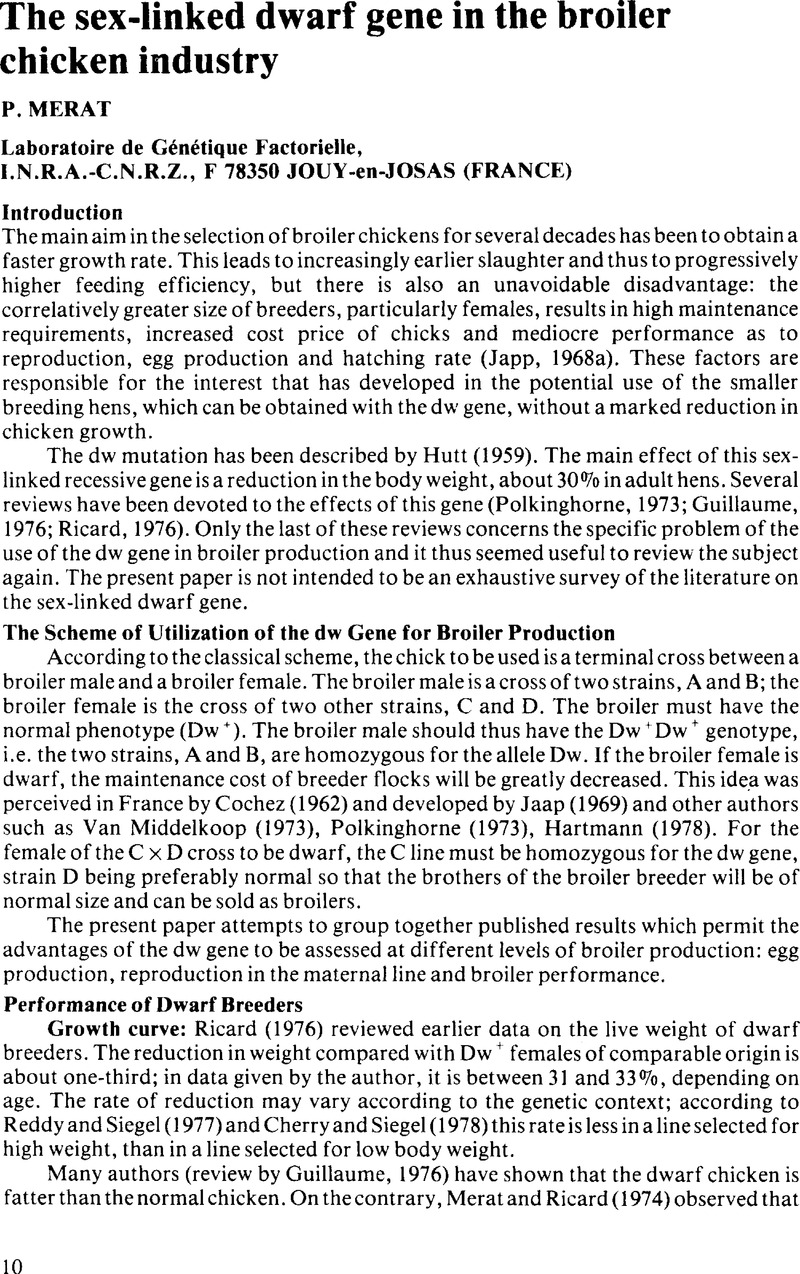Crossref Citations
This article has been cited by the following publications. This list is generated based on data provided by Crossref.
Tixier‐Boichard, M.
Monvoisin, J. L.
Rombauts, P.
and
Decuypere, E.
1990.
Effect of the sex‐linked dwarf gene on circulating levels of 17/β‐estradiol, progesterone and luteinising hormone in the laying hen.
British Poultry Science,
Vol. 31,
Issue. 2,
p.
385.
Tixier-Boichard, M.
Decuypere, E.
Huybrechts, L.
Kühn, E.
and
Mérat, P.
1990.
Effects of dietary T3 on growth parameters and hormone levels in normal and sex-linked dwarf chickens.
Domestic Animal Endocrinology,
Vol. 7,
Issue. 4,
p.
573.
ZULKIFLI, I.
DUNNINGTON, E.A.
GROSS, W.B.
LARSEN, A.S.
MARTIN, A.
and
SIEGEL, P.B.
1993.
Responses of Dwarf and Normal Chickens to Feed Restriction, Eimeria tenella Infection, and Sheep Red Blood Cell Antigen.
Poultry Science,
Vol. 72,
Issue. 9,
p.
1630.
Liu, Hsiao-Ching
Kung, Hsing-Jien
Fulton, Janet E.
Morgan, Robin W.
and
Cheng, Hans H.
2001.
Growth hormone interacts with the Marek's disease virus SORF2 protein and is associated with disease resistance in chicken.
Proceedings of the National Academy of Sciences,
Vol. 98,
Issue. 16,
p.
9203.
Deeb, N.
and
Cahaner, A.
2001.
Genotype-by-Environment Interaction with Broiler Genotypes Differing in Growth Rate: 2. The Effects of High Ambient Temperature on Dwarf Versus Normal Broilers.
Poultry Science,
Vol. 80,
Issue. 5,
p.
541.
Julian, Richard J.
2005.
Production and growth related disorders and other metabolic diseases of poultry – A review.
The Veterinary Journal,
Vol. 169,
Issue. 3,
p.
350.
Chen, Chih-Feng
Gourichon, David
Huang, Nein-Zu
Lee, Yen-Pai
Bordas, André
and
Tixier-Boichard, Michèle
2009.
Performance comparison of dwarf laying hens segregating for the naked neck gene in temperate and subtropical environments.
Genetics Selection Evolution,
Vol. 41,
Issue. 1,
Larivière, J.-M.
and
Leroy, P.
2010.
Presumed genotypes from phenotypic traits in traditional Belgian chicken breeds.
European Poultry Science,
Vol. 74,
Issue. 4,
p.
217.
Tahir, M.
Cervantes, H.
Farmer, C.W.
Shim, M.Y.
and
Pesti, G.M.
2011.
Broiler performance, hatching egg, and age relationships of progeny from standard and dwarf broiler dams.
Poultry Science,
Vol. 90,
Issue. 6,
p.
1364.
Liu, Ranran
Xing, Siyuan
Wang, Jie
Zheng, Maiqing
Cui, Huanxian
Crooijmans, Richard P. M. A.
Li, Qinghe
Zhao, Guiping
and
Wen, Jie
2019.
A new chicken 55K SNP genotyping array.
BMC Genomics,
Vol. 20,
Issue. 1,
Haunshi, Santosh
Murugesan, Shanmugam
Leslie, Prince L.L.
Ullengala, Rajkumar
and
Nath, Chatterjee R.
2025.
Effect of a Unique Dwarfism on Growth, Production, and Reproduction Performance of the Nicobari Chicken Breed.
The Journal of Poultry Science,
Vol. 62,
Issue. 0,
p.
n/a.



